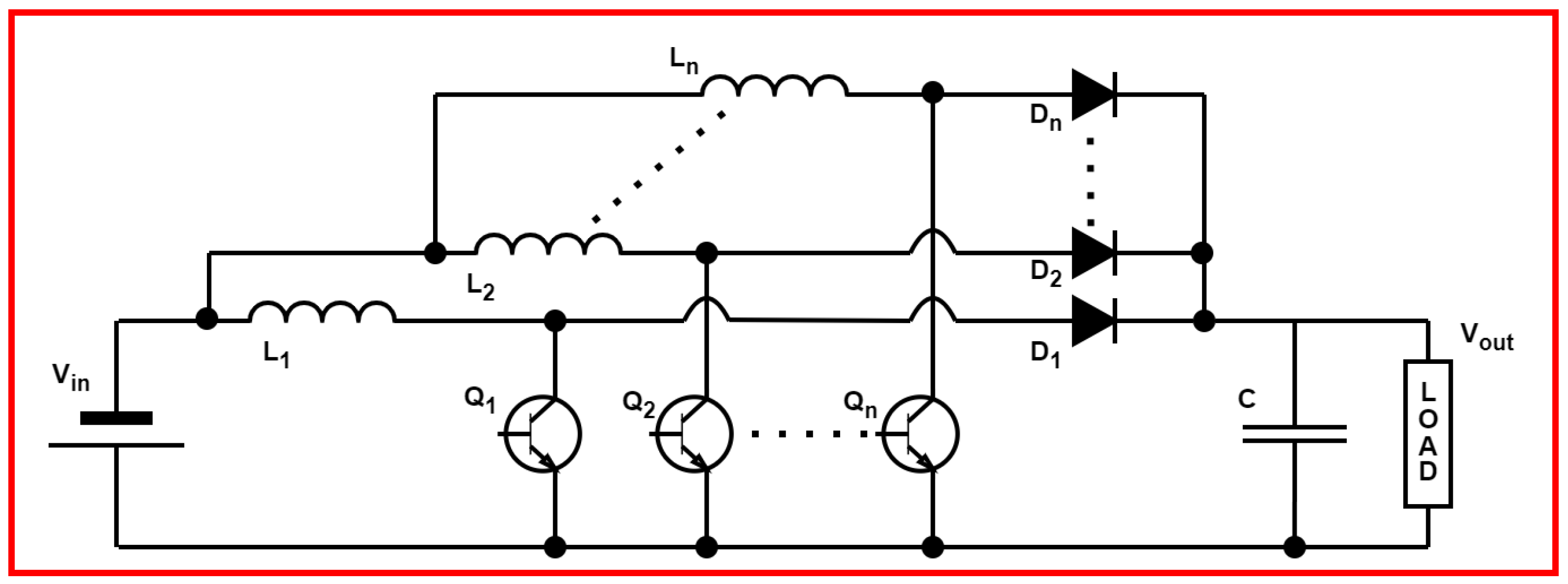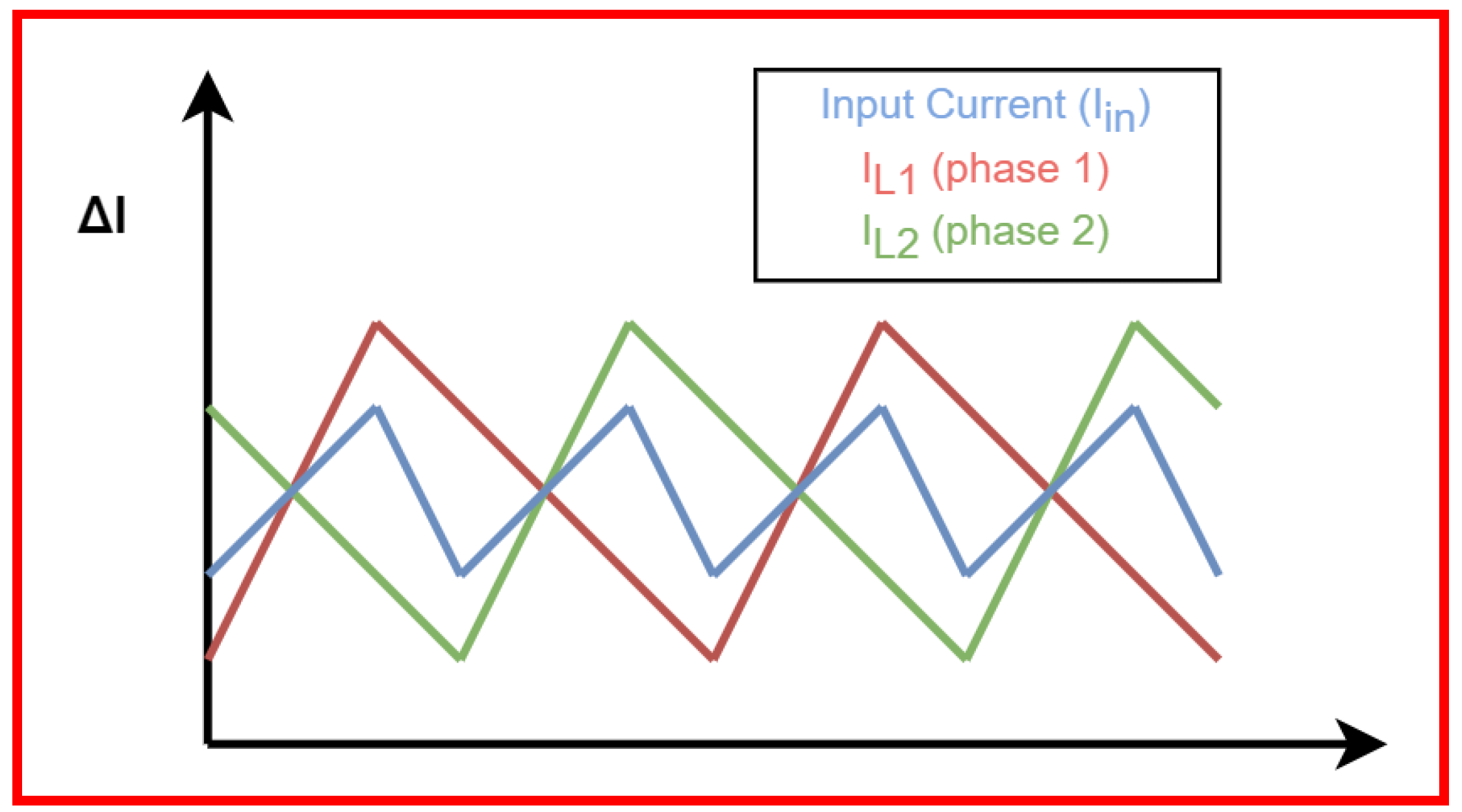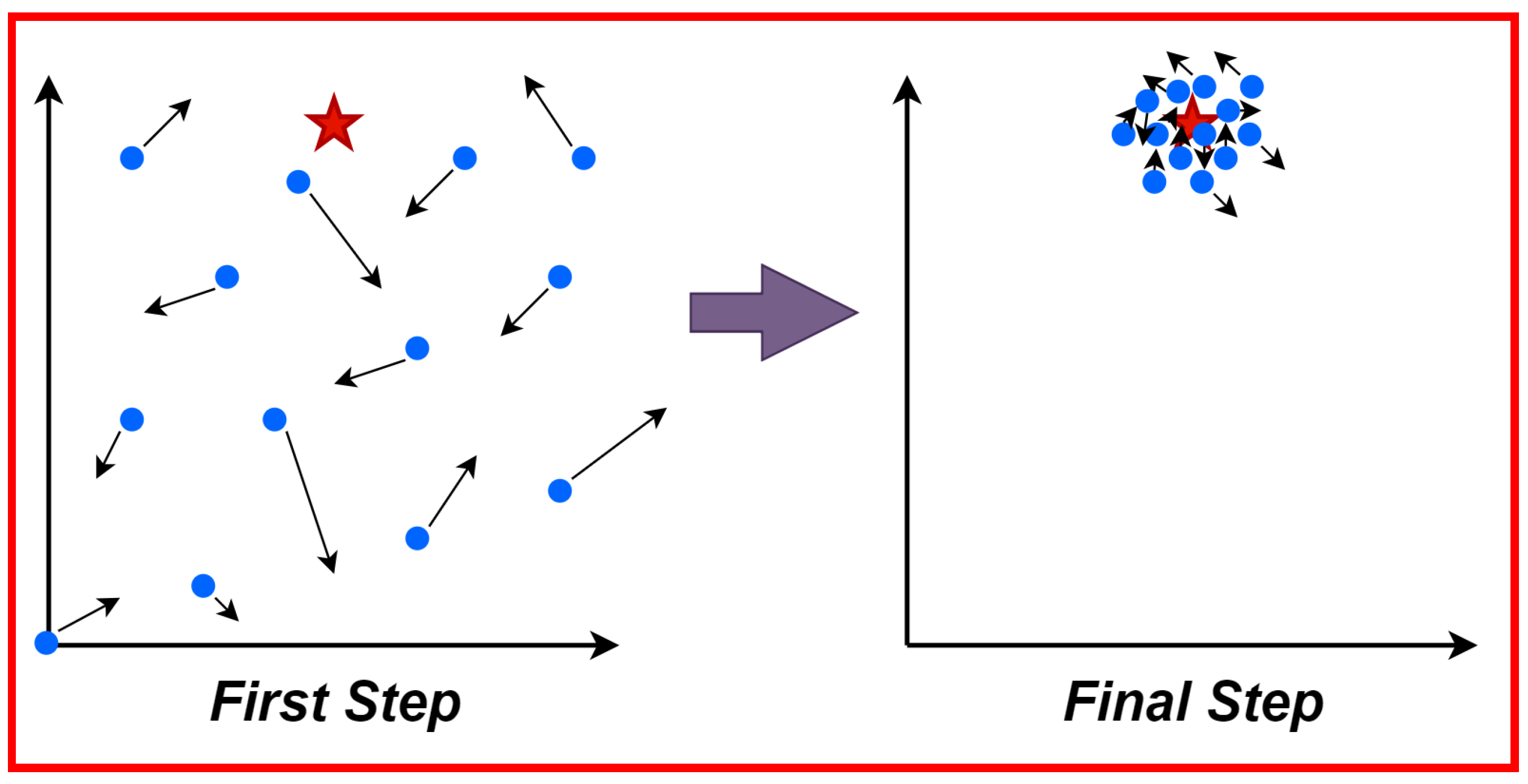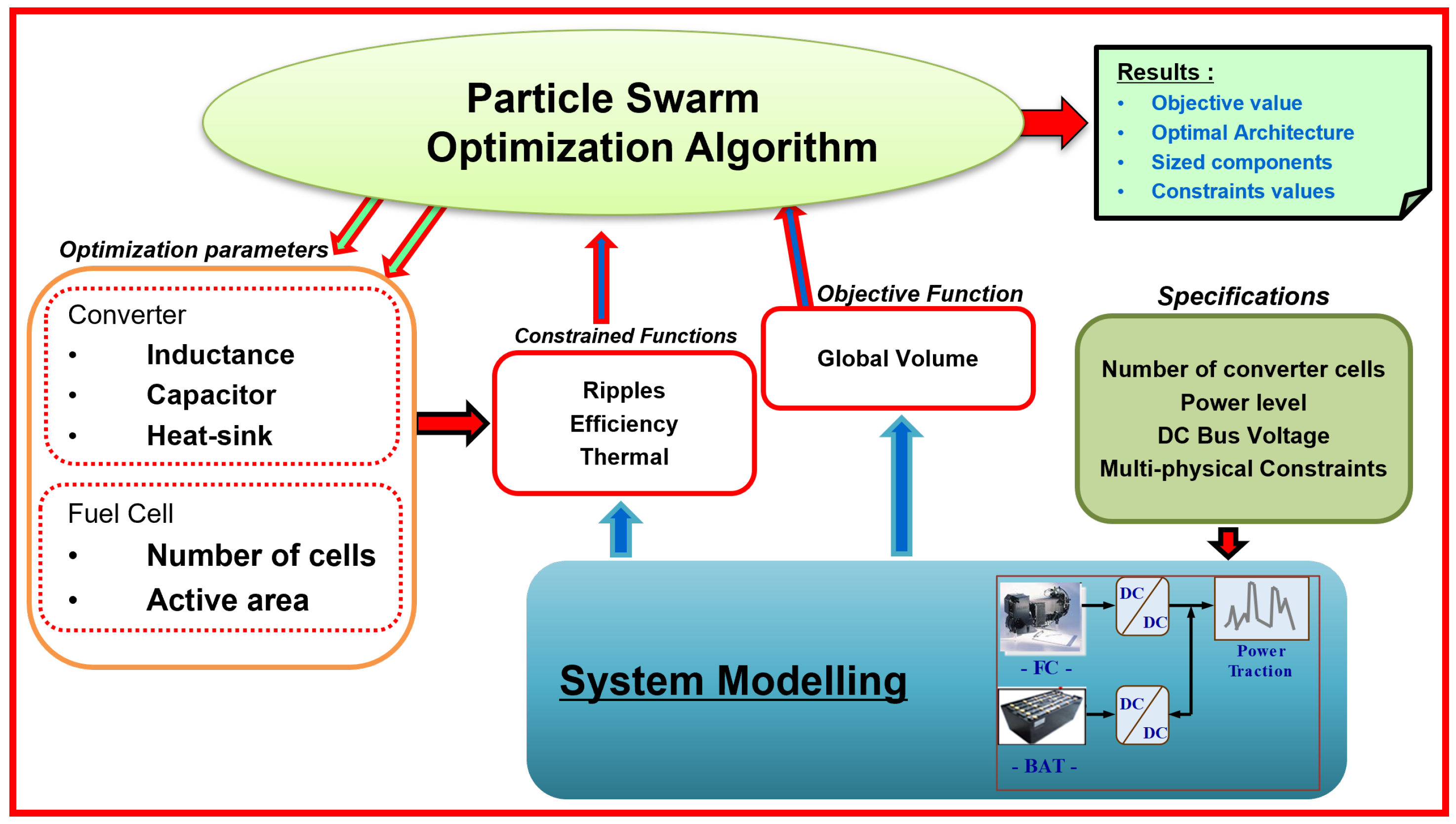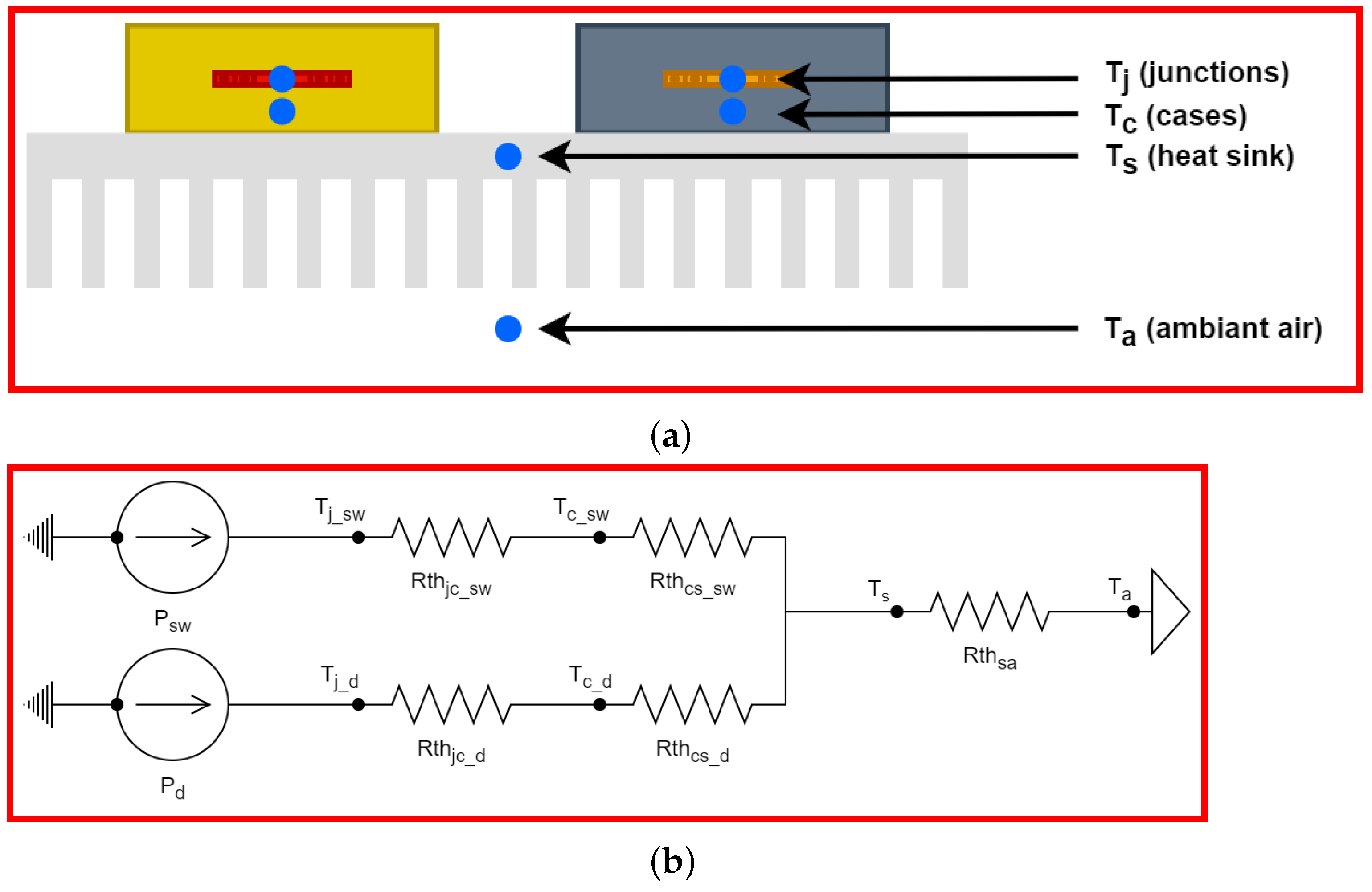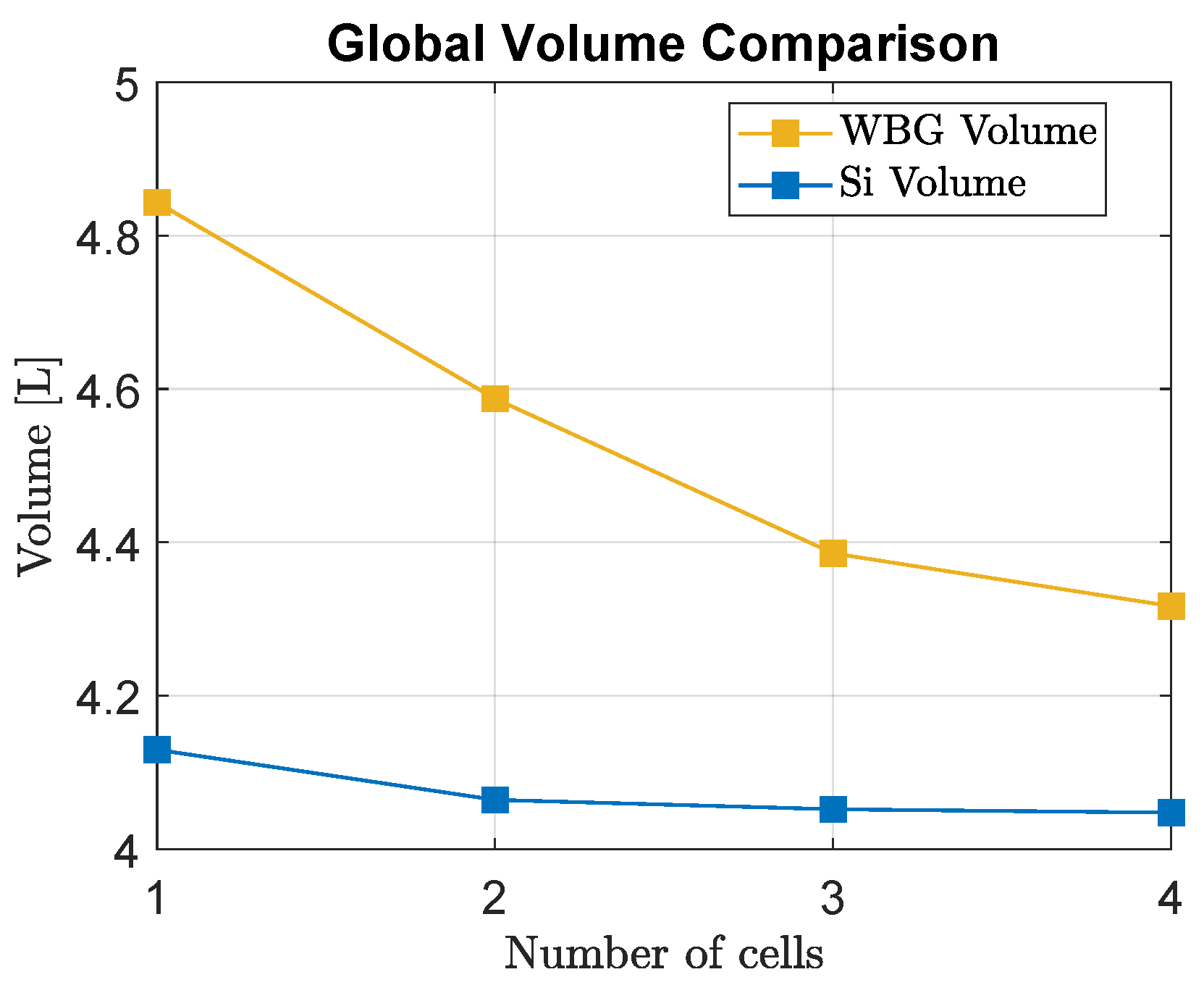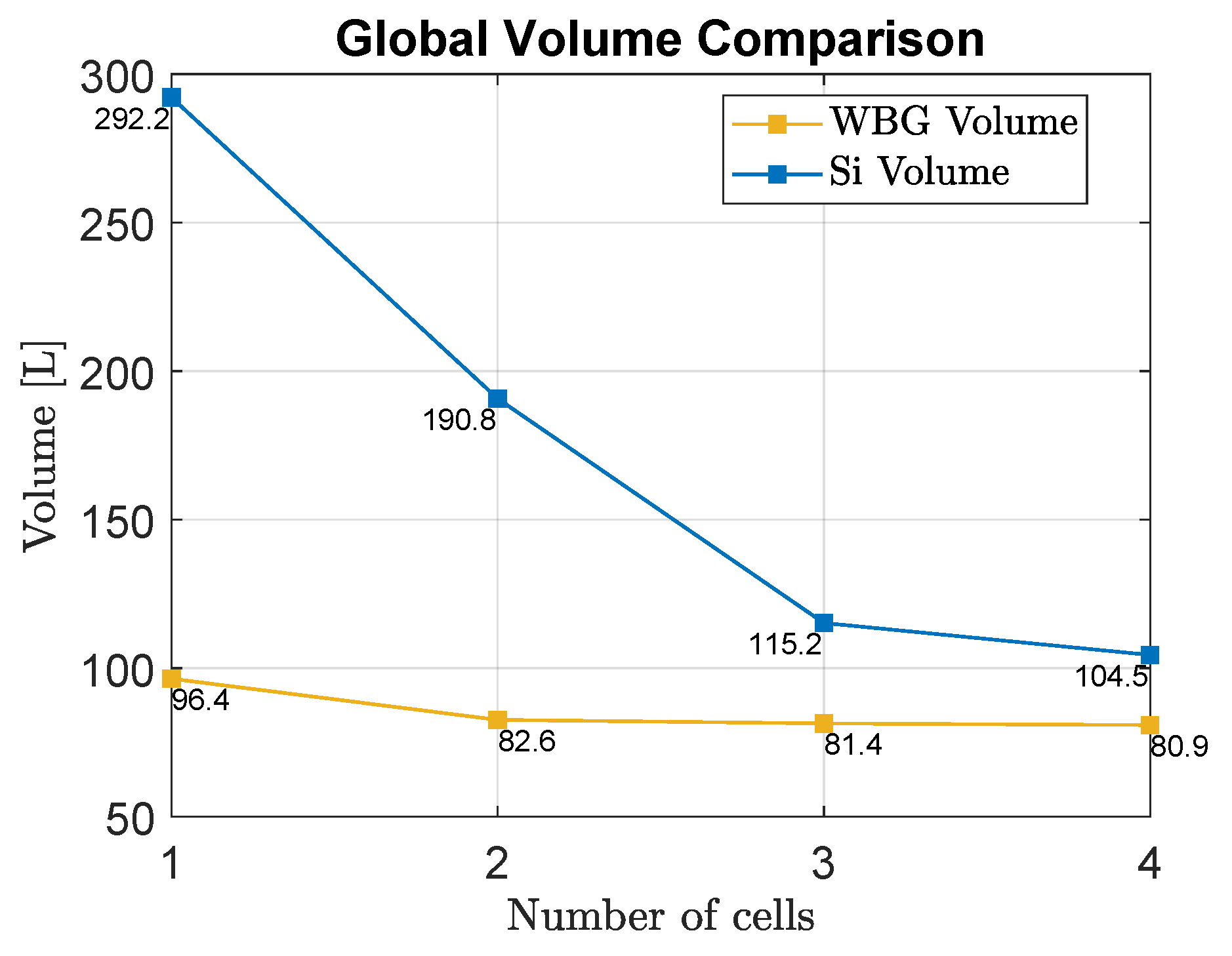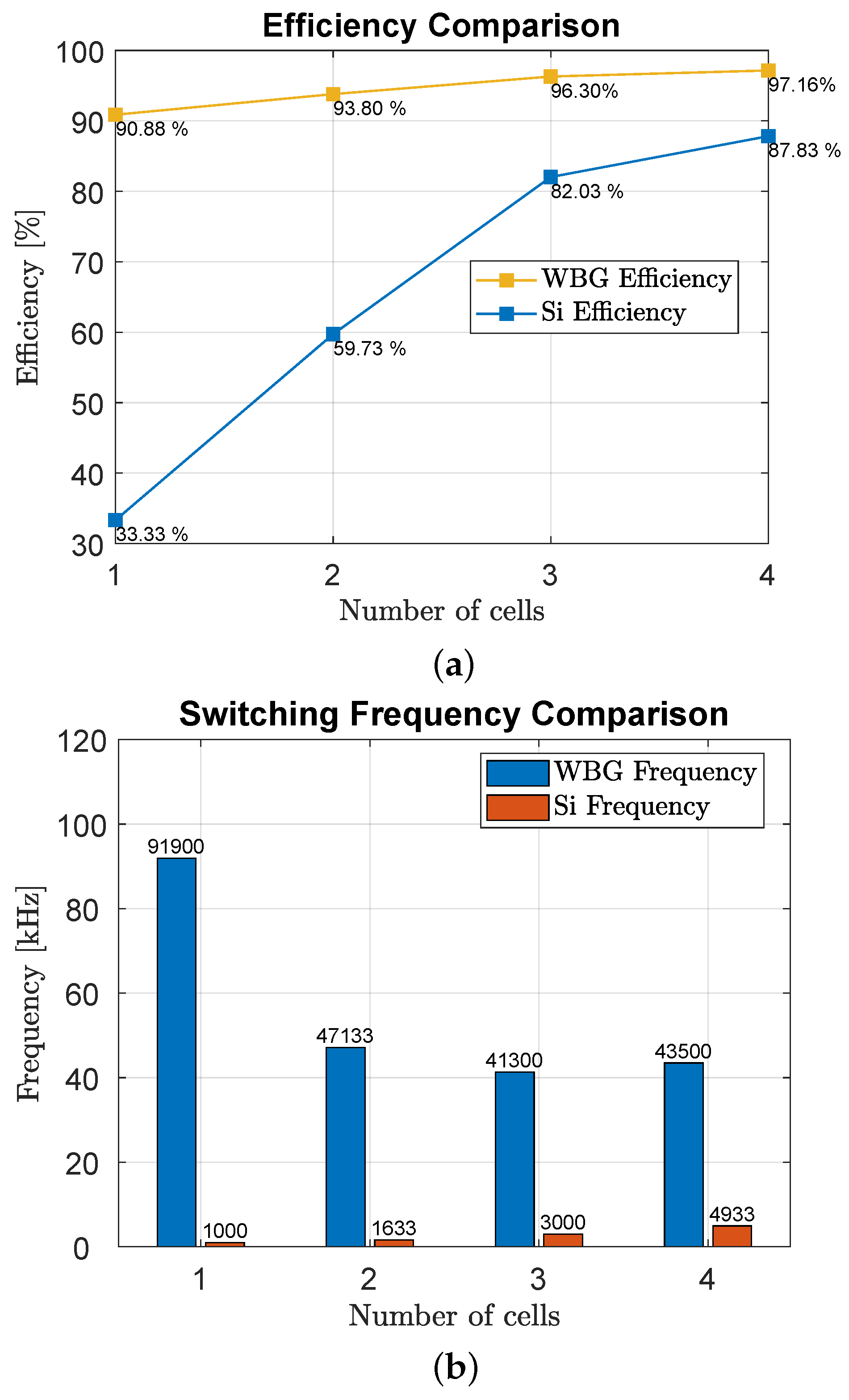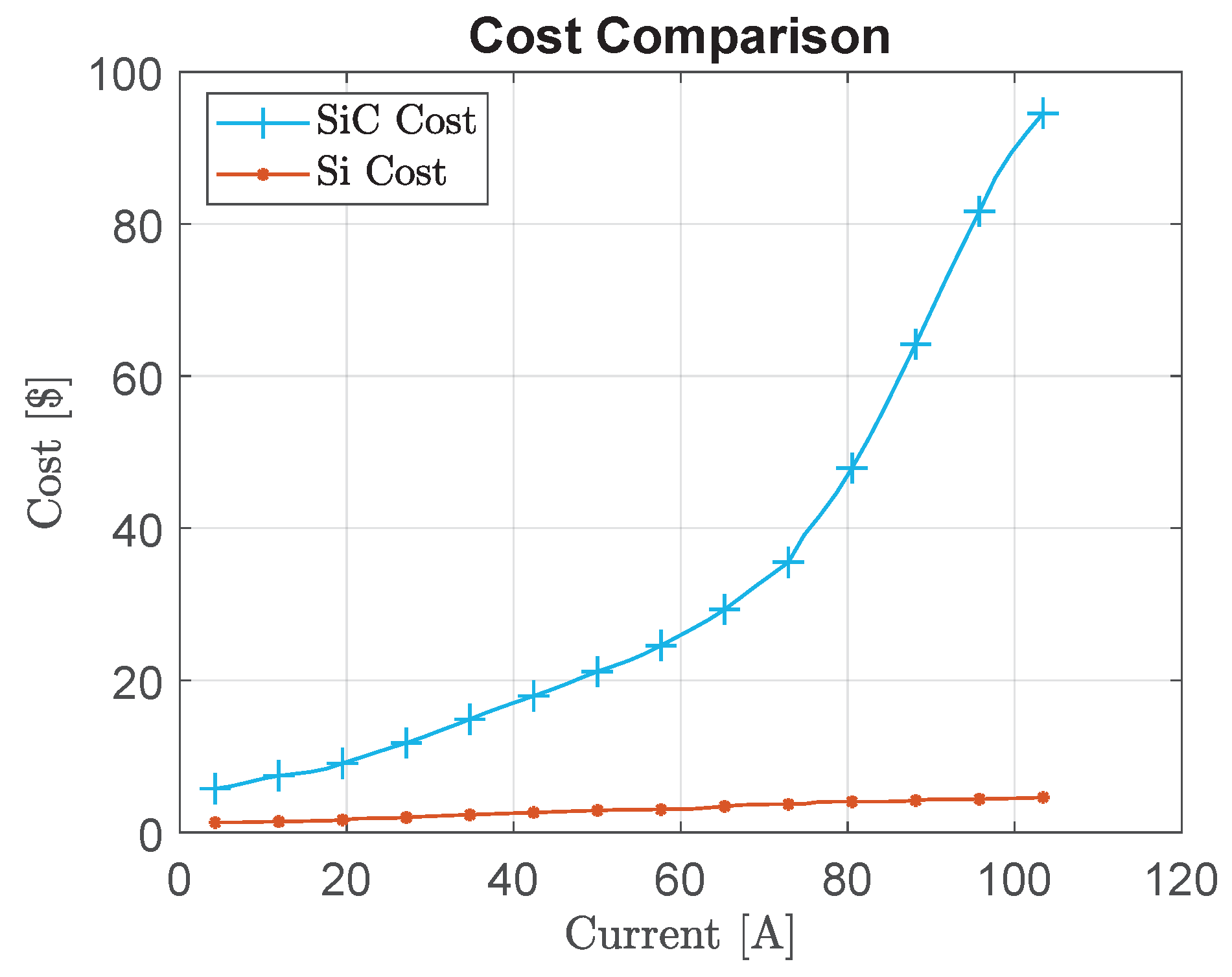1. Introduction
With the increasing demand for transporting people or equipment, the transport sector is continuously evolving, necessitating the development of diverse modes of conveyance. On the other hand, the impact of energy cost has precipitated a transition from obsolete, petroleum-based fuel into electric vehicles [
1,
2,
3,
4,
5]. Indeed, the transport sector is responsible for around 25% of the final energy consumption in the world and continues to grow [
6,
7], with the major amount of energy produced from fossil sources, respectively, oil, coal, and natural gas. This perspective shift involves a transitional phase characterized by innovative approaches to electrifying these vehicles, such as full-electric vehicles (EVs), plug-in hybrid electric vehicles (PHEVs), and hybrid electric vehicles (HEVs) [
8]. They benefit from several advantages, such as quiet operation, regenerative braking, and zero pollutant emissions while driving. However, EVs, PHEVs, and HEVs still suffer from charging times and driving range [
9,
10]. Several studies are exploring ways to meet the increasing electricity demand in terms of green production for charging electric vehicles, with initiatives such as photovoltaic parking lots or wind turbines gaining attention [
11,
12]. Nevertheless, it is essential to note that PHEVs and HEVs still depend on oil and cannot be named as zero pollutant emission vehicles [
5]. Furthermore, these types of vehicles still face some challenges represented as energy efficiency, cost, performance, service continuity, modularity, etc.
The prospect of utilizing dihydrogen as the primary power source for vehicles stands out as one of the promising solutions to address the existing limitations [
4,
13]. Although hydrogen production faces challenges, particularly with methods like steam methane reforming process (SMR) that emit pollutants, renewable energy sources like solar panels and wind turbines offer alternative methods for producing hydrogen using excess power [
14,
15,
16]. Unfortunately, at present, almost all hydrogen production comes from this polluting process. In the long term, this green approach could remain beneficial for local hydrogen production, moderating challenges associated with hydrogen transportation.
The Fuel-Cell Hybrid Electric Vehicle (FCHEV) hence represents an innovative concept, combining a fuel cell with an energy-storage system (ESS) to provide the propulsion power requirement. The ESS can be either a battery pack or an ultracapacitor pack. The battery remains more suited for automotive applications. This hybridization ensures a more flexible and efficient propulsion system, offering potential solutions to overcome the challenges associated with conventional electric vehicles, particularly in terms of autonomy, refueling infrastructure, interaction with renewable energies, and overall performance [
17]. The literature also supports similar conclusions [
18], considering the level of vehicle autonomy.
This transition to electrifying vehicles leads to a significant rise in the demand for power electronics converters. These converters play a major role in the conversion process of EVs, facilitating the adaptation of electric requirements between sources and the propulsion system while preventing the risk of premature source degradation.
Within the automotive sector, power electronics find various applications in extremely harsh environments. They need to comply with the tendency to use less and less volume and weight, as well as ensure service continuity within the power architecture. These considerations are inherently linked to powertrain efficiency, which, similarly, influences fuel consumption reduction [
19]. In this challenging context, these components are subjected to operation under elevated temperatures, necessitating a delicate balance between reliability and cost-effectiveness. The imperative is to ensure that power electronics in automotive applications not only meet precise performance standards but also remain economically viable within the absolute objectives of enhancing powertrain efficiency and reducing energy consumption. This involves the use of appropriate converter architectures and the associated components.
Indeed, among the proposed solutions, the interleaving technique is introduced to limit constraints related to components and improve overall converter efficiency by incorporating parallel commutation cells within the converter. Interleaved converters represent a notable advancement in power electronics, addressing key challenges associated with conventional converter architectures. This innovative approach offers several advantages, with a primary focus on minimizing the stresses on individual components by distributing the current load among multiple cells, mitigating issues related to current ripples and associated constraints. Another benefit is the enhanced efficiency of the converter, which reduces losses and optimizes energy transfer. Furthermore, interleaving contributes to the compactness and modularity of power electronics systems, allowing for more flexibility and adaptability in various applications. This modularity not only simplifies system design but also enhances service continuity and fault tolerance, key factors in the evolving landscape of electric vehicles and renewable energy systems.
In another way, the present Silicon (Si) power electronics technology is reaching the theoretical limits of the material [
20], making it less performant to meet all the requirements of power electronics within the transportation industry. The maximum junction temperature limit of Si is approximately 150 °C, necessitating substantial heat sinks to fulfill all the vehicle specifications. Furthermore, the switching frequency of Si-based devices is constrained due to the heat generated, primarily caused by the switching losses. Fortunately, a new class of semiconductor materials, known as wide-bandgap (WBG) semiconductors, stands to surpass current materials in transportation applications. Among these materials are silicon carbide (SiC), gallium nitride (GaN), and diamond [
21].
This work pursues a previous study [
22], aiming to design a FCHEV with interleaved converters using an optimization algorithm. The objective is to develop an efficient sizing methodology, incorporating the modularity concept through the utilization of an interleaved architecture combined with the use of the potential of wide-bandgap semiconductors.
The article is organized as follows: the first section provides an overview of current technologies and challenges in the field. In the second section, the designed approach is detailed, emphasizing the innovative aspects of the interleaved converter design. The third section presents results and analysis, providing an understanding of the performance and efficiency gains of the proposed design and the potential of wide-bandgap semiconductors. A brief conclusion underlines, however, some limitations and the future of this work.
2. Literature Review
Despite facing certain limitations, FCHEVs share the inherent benefits of EVs, making them a promising solution for the future of mobility [
8,
23]. The Proton Exchange Membrane Fuel Cell (PEMFC) emerges as the most viable fuel-cell technology for transportation applications due to its low operating temperature, high power density, and quick start-up.
Various architectures are available for constructing FCHEVs, primarily differing in the chosen power sources. These architectures involve the hybridization of a fuel cell with batteries, ultracapacitors, solar panels, or a combination of those. Additionally, distinctions exist based on the presence of a DC converter between the power source and the DC bus. Some manufacturers prefer individual DC converters for each power source, while others encourage the incorporation of a single DC converter for the battery or fuel cell only [
24].
Considering the intrinsic features of PEMFCs, characterized by slow dynamic response, low voltage, and high current, and taking into account the voltage specifications of the motor drive system, it is imperative to incorporate a power converter between the PEMFC and the motor drive system. This is crucial for achieving effective power conditioning.
There are two different kinds of DC/DC converters, isolated and non-isolated, which are presented in
Figure 1. Isolated converters settle on galvanic isolation, but this advantage comes at the expense of increased volume, higher weight, and multiplied complexity in the design process [
25].
On the other hand, non-isolated DC/DC converters are widely favored due to their simple design, high compactness, cost-effectiveness, and simplified control. Notable non-isolated topologies, such as the Boost converter, Buck converter, Buck-Boost converter, Cuk converter, and Flyback converter, are well-established in the field [
26].
Among these various topologies, the Boost converter stands out as the most frequently utilized, primarily due to its inherent advantages in terms of simplicity and cost-effectiveness. It is essentially applied to non-reversible systems. The voltage gain ratio of a Boost converter consistently remains above one throughout the entire duty cycle range (from zero to one), resulting in a positive output voltage concerning the input voltage. These characteristics contribute to its prominence in various domains, particularly in fuel cell embedded systems [
24].
In search of supporting the main constraints for fuel cell integrating, like minimizing current ripple, increasing lifespan, and concurrently addressing concerns regarding the weight and size of the FC system, a range of non-isolated DC/DC Boost converters has been developed based on the interleaved technique. This strategic design aims to enhance the efficiency and performance of the converters by interleaving multiple switching cells, as illustrated in
Figure 2. Additionally, it improves modularity, thus enhancing service continuity and fault tolerance within the converter.
Interleaving involves distributing the input current across multiple parallel power switches, resulting in a reduction in the current stress experienced by each power switch. This, therefore, enhances the overall efficiency and performance of the converter, along with enhancing modularity and service continuity. The adoption of such configurations not only contributes to minimizing current ripple but also plays a crucial role in optimizing the overall weight and volume of the fuel-cell power architecture [
27]. As shown in
Figure 3, the input current ripple is reduced, therefore preserving the energy source from high current fluctuations.
The Floating Interleaved Boost Converter (FIBC) has received considerable attention in research studies [
28]. This converter stands out for its capability not only to reduce power source current ripple but also to benefit from a better voltage gain ratio. Nevertheless, it is worth noting that the control design for the FIBC remains more complicated, in terms of practical realization and control, compared to the Interleaved Boost Converter (IBC) [
29].
Diverse solutions have been introduced to address these challenges, incorporating innovative architectures and/or components. In particular, from an architectural perspective, a notable technique involves coupled magnetic components. This approach aims to enhance compactness, decrease weight, and amplify voltage gain within the converter system. By integrating coupled magnetic components, these converters achieve a more relevant design, enhancing the system efficiency and minimizing the impact of current ripple at the converter input but also within the individual phases [
30].
From a component perspective, the emergence of wide-bandgap semiconductors has offered the possibility to design converters with significantly improved efficiency. It presents an innovative opportunity to enhance the performance of converters by exploiting the better electronic properties inherent in materials such as silicon carbide (SiC) and gallium nitride (GaN). Wide-bandgap semiconductor materials reveal exceptional electrical characteristics compared with Si, as shown in
Table 1:
These new components present reduced conduction losses and switching losses, allowing for an elevated switching frequency. Additionally, they possess higher thermal conductivity, except for GaN. This results in a lower junction-to-case thermal resistance, facilitating more efficient heat transfer out of the device. Consequently, these components can operate at significantly higher temperatures, reaching up to 600 °C, in noticeable contrast to the maximum junction temperature limit of around 150 °C for Silicon devices [
31]. These characteristics offer greater flexibility in the sizing process and, most importantly, in the exploration of optimization possibilities [
32].
4. Results and Analysis
The chosen architecture follows the previous indications, as illustrated in
Figure 4. It involves a fuel cell paired with a DC Boost converter connected to a load. This architecture is part of a fuel-cell hybrid electric vehicle comprising two power chains operating in parallel. The hybridization concept provides high degrees of freedom for optimal sizing and associated energy management, as explained in [
35]. The fuel cell adopted is a Ballard PEMFC type.
The methodology was executed within the MATLAB R2020b environment, and the optimization algorithm was self-coded to provide adaptability in parameter adjustments.
The primary optimization parameters for the power converter include the cell number (q), which plays a central role in defining the converter architecture, switching frequency (f), elementary cell inductance (L), and output capacitance (C). Technology parameters for each component are also included as optimization parameters due to the substantial influence of passive component technology on both constraints and the objective function. Considering the energy sources, the optimization process for the fuel cell integrates the number of cells arranged in series and the active surface area of each cell as primary parameters. Consequently, the optimization process aims to minimize the performance indexes (objective function) according to the constraints/requirements considered by evaluating their optimal range values.
4.1. Optimization Results
4.1.1. Laboratory Use Case
First, to assess the impact of wide-bandgap technology integration in a fuel-cell electric vehicle, an interleaved converter within a power chain that incorporates a fuel cell connected to a small load is considered, with the following specifications:
Output DC bus voltage: 60 V
Output Load power: 2 kW
Cell number:
Moreover, the associated problem formulation is exposed in
Table 3:
The initial validation focuses on a laboratory use case with a small 2 kW load operating at a 60 V voltage level. This preliminary step provides an initial analysis of the benefits of using wide-bandgap devices. As illustrated in
Figure 9, when operating with a single-cell DC/DC converter, the utilization of WBG devices reduces the optimal architecture volume by 12.5%. However, this reduction is less pronounced when working with an interleaved converter. This observation underscores the impact of WBG devices in different converter configurations, highlighting the need for further exploration and optimization in specific scenarios.
On the other hand,
Figure 10a illustrates the efficiency comparison of each architecture. It is important to note that the converter efficiency for each architecture using wide-bandgap devices outperforms that of architectures employing standard (Si) devices.
Indeed, at this power level, the algorithm can explore among very high switching frequencies, as demonstrated in
Figure 10b (around 100 kHz), because wide-bandgap devices can tolerate much higher junction temperatures (600 °C) than standard devices. It is worth noting that an increase in the switching frequency provokes a higher junction temperature in semiconductor devices due to the rise in power losses in the components. This, consequently, results in a better converter efficiency and enhances the current/voltage ripples on the converter input/output, as shown in
Table 4.
On the contrary, for architectures using standard devices, the upper limit of component junction temperature is reached much more quickly (130 °C), forcing the algorithm to search for larger elements to accommodate the imposed ripples. Consequently, this leads to a larger overall architecture volume with significantly lower switching frequencies.
4.1.2. Real-Car Use Case
The transition from a small 2 kW load to a significant 40 kW use case marks an evolution from laboratory-scale simulations to a more representative scenario aligning with automotive applications. This progression aims to analyze the adaptability and performance of the proposed WBG devices and interleaved converter architecture in a context that reflects the power demands of actual vehicles. The outcome of this new study will provide valuable insights into the feasibility and advantages of implementing WBG devices in power converters for electric vehicles, emphasizing their potential impact on larger-scale applications. Consequently, the updated requirements are as follows:
Output DC bus voltage: 360 V
Output Load power: 40 kW
Cell number:
These specifications are selected based on the maximum power delivered by the fuel cell within a WLTC-driven cycle. Employing the same formalism as stated in
Table 3, the new use case presents different results compared to the initial validation.
As indicated in
Figure 11, the volume gain in this scenario is notably significant, with a remarkable 22% reduction achieved using a four-phase interleaved converter.
Regarding the architecture utilizing Si devices with only one switching cell, it is crucial to highlight that the semiconductor junction temperatures serve as the limiting factor. Consequently, the algorithm tends to prioritize lower switching frequencies, leading to increased input and output ripples and a reduction in the converter’s efficiency, as illustrated in
Figure 12.
Moreover, this approach pushes the fuel-cell voltage to its maximum to restrict the current flowing through the converter. However, this configuration remains not feasible according to the previous formalism described in
Table 3. The demand for current exceeds the limits achievable using Si devices. To align with the formalism, the two revised limits are presented in
Table 5:
A similar issue occurs when employing a two-phase converter, as indicated in
Table 6. However, the architecture becomes feasible when utilizing a 3-phase or 4-phase interleaved converter.
In contrast, in the absence of interleaving, the limiting constraint for the WBG architecture is the input current ripple. Consequently, the algorithm tends to favor higher switching frequencies, which have a reduced impact on these advanced semiconductors capable of supporting elevated junction temperatures.
When interleaving phases, the algorithm makes a compromise between current/voltage ripples and semiconductor temperatures.
It is noteworthy that, despite these considerations, the converter efficiency remains significantly higher when utilizing WBG devices.
Finally, the demonstrated performances of wide-bandgap devices open up new possibilities for maximizing the modularity potential of the converter in terms of both efficiency and service continuity. The improved capabilities of these innovative devices, particularly in handling power flow, contribute to excellent performance and introduce new solutions for system reconfiguration in the event of faults within the converter.
These findings rather align with existing literature, as seen in [
36,
37], which indicates that the use of WBG devices increases inverter efficiency. However, compared with other studies [
38,
39], the results obtained here are less optimistic in terms of volume reduction. Nevertheless, all these studies prove a notable enhancement in converter efficiency, attributed to the capability of WBG devices to operate at much higher switching frequencies and junction temperatures.
4.2. Cost Analysis
While the adoption of wide-bandgap devices presents significant advantages, particularly in achieving a noticeable reduction in volume, it is essential to reveal that these advanced devices come with a higher associated cost. The trade-off between the gains in volume efficiency and the increased expenses incurred by the utilization of WBG devices is an important consideration in the overall evaluation of the power converter architecture for fuel-cell electric vehicles. This balance between performance benefits and economic considerations underscores the need for a comprehensive analysis and optimization process in the design of power converters for real-world applications.
Even if WBG devices offer very useful properties in volume reduction, a challenge for the coming years remains in the cost reduction of these new components.
Figure 13 illustrates a succinct comparative analysis between a silicon carbide device, denoting a wide-bandgap material-based device, and a standard silicon device as a function of the current flowing through the device based on [
40]. Each data point within the plot corresponds to an individual discrete device.
In a context of a 20-ampere current flow, it is noteworthy that a Si device is substantially more economical, with a cost of merely 1.5 USD, in stark contrast to the 9-dollar expense associated with the WBG device for the identical current intensity. This cost differential becomes increasingly pronounced when processing with progressively higher current levels. For instance, at an 80-ampere current, a Si device can be procured for a mere 4 USD, while the SiC device commands a significantly higher price tag of nearly 50 USD, exceeding the former by a factor superior to ten-fold.
5. Conclusions
This paper introduces a pre-sizing approach adapted for a fuel-cell electric vehicle system employing interleaved converters. The utilization of interleaved techniques, particularly with wide-bandgap semiconductors, has been investigated, showing noticeable benefits in terms of volume reduction and efficiency enhancement. The presented pre-sizing approach, using a Particle Swarm Optimization algorithm, becomes a helpful tool for designers, providing optimal power structure sizing while respecting rude specifications. Analytical models are employed to represent the system’s behavior, including sources, converters, and associated constraints (volume, electric, thermal, and efficiency). These models are subject to the number of switching cells, a crucial modular design parameter.
The results regarding a low power level reveal a notable reduction in volume, particularly noticeable in a single-cell converter but still significant in a four-cell interleaved converter. Additionally, the use of WBG semiconductors, due to their high-temperature tolerance, allows better flexibility in handling certain constraints, enhancing the converter efficiency and a higher switching frequency.
At a real-life power level based on the WLTC cycle, a 22% reduction in volume is achieved by employing a four-phase interleaved converter. Furthermore, using WBG semiconductors in this scenario enables the viability of architectures using a small number of converter cells. As in the previous case, WBG utilization improves converter efficiency and allows a moderate switching frequency, in contrast to the limited switching frequency observed in architectures employing standard semiconductors.
Moreover, the study indicated a comparison of manufacturing costs between standard and WBG semiconductors, providing an economic aspect of adopting advanced semiconductor technologies in Boost converters for FCHEVs.
There are certain limitations associated with this study. A mono-objective optimization may not fully address all aspects of system performance, but a multi-objective optimization approach could be employed to identify compromises among various performance indexes, such as power efficiency and component lifespan. This would enable the selection of the most suitable design solution based on the designer’s preferences. Furthermore, this work focuses on a single-source power chain designed for a future hybrid architecture representing an FCHEV. Subsequent studies will need to incorporate these results and approach into a hybrid power chain to better align with a real FCHEV.

